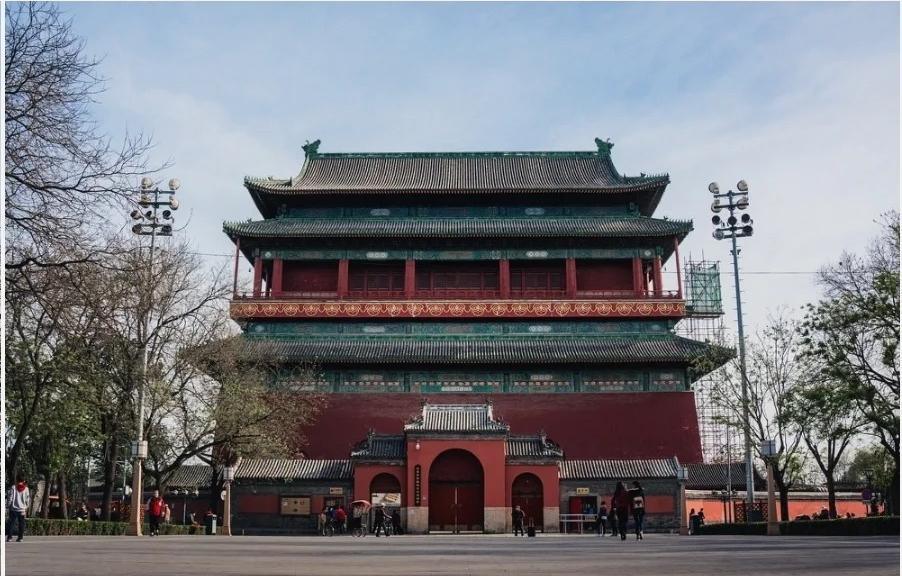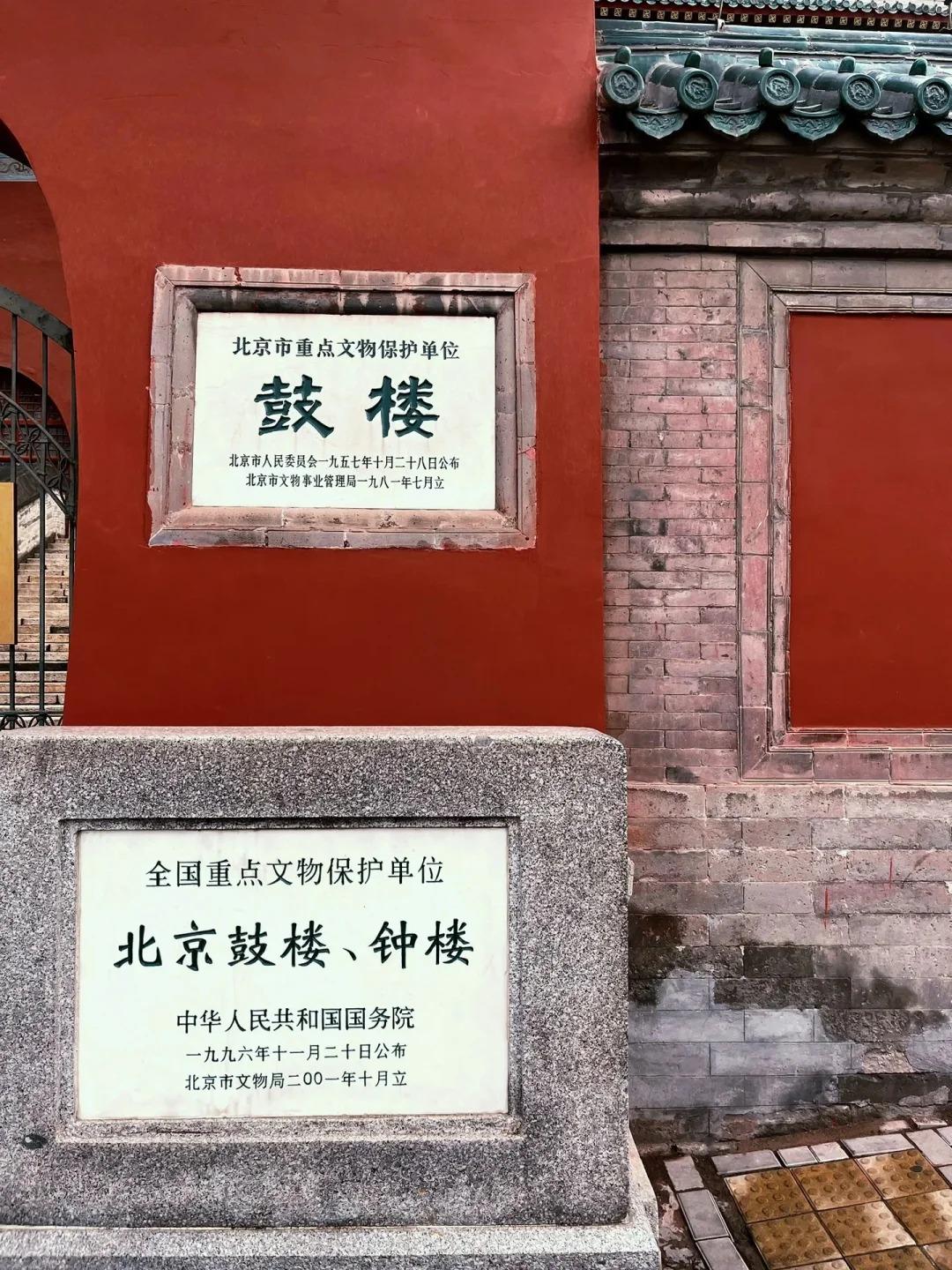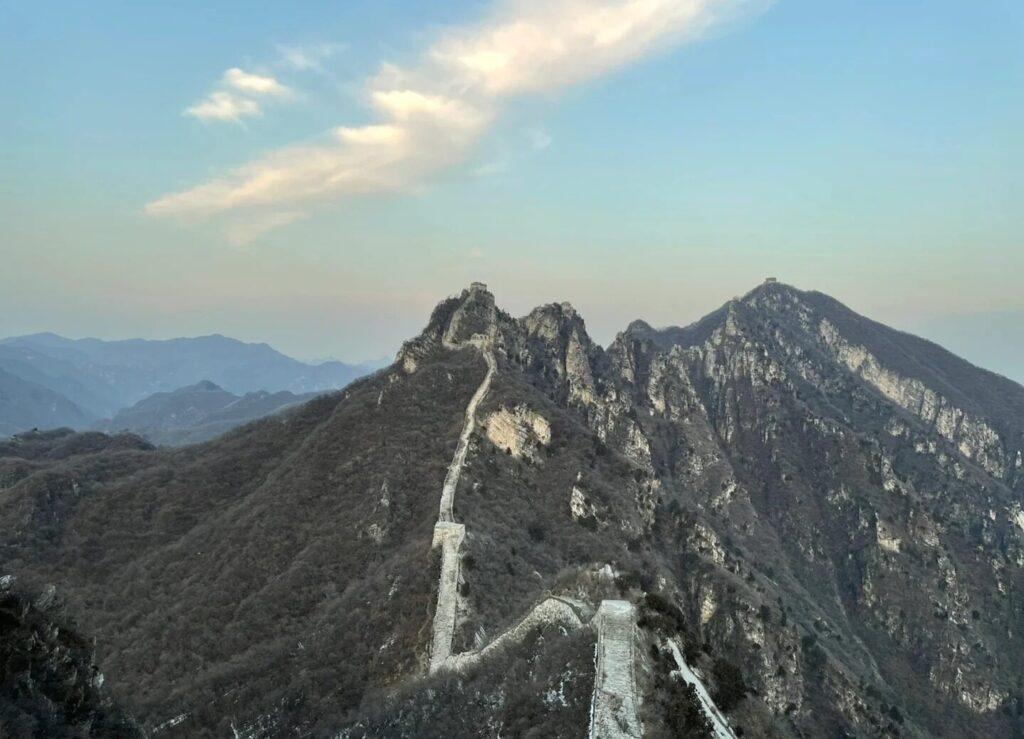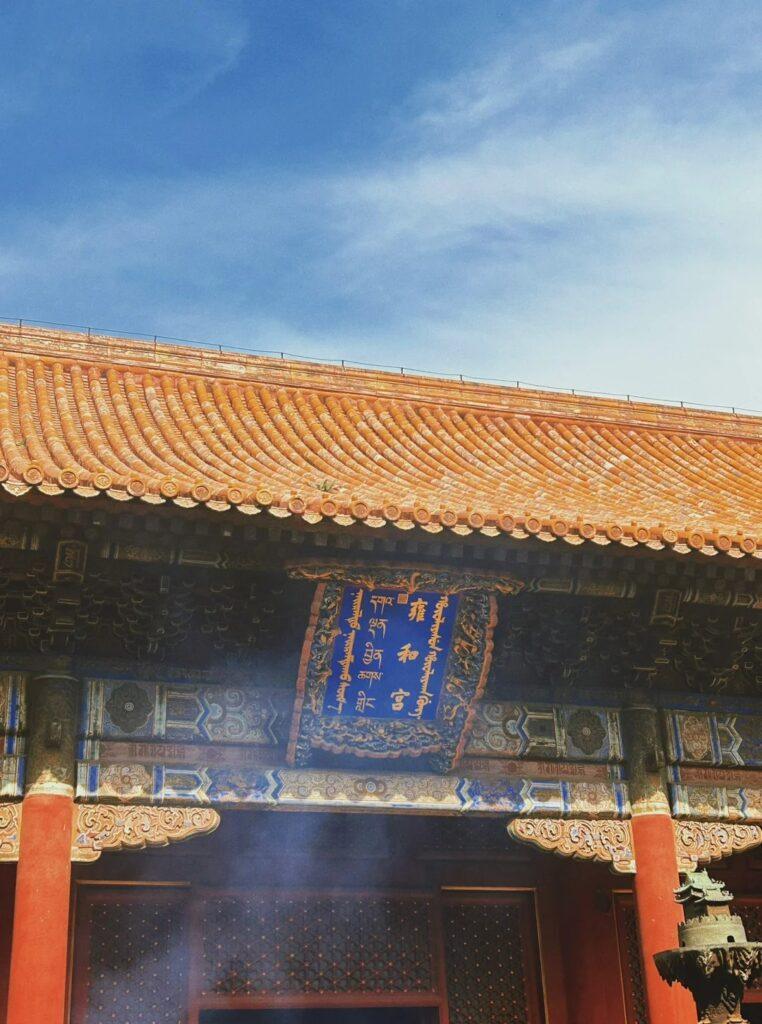Visiting Information
| Information | Details |
|---|---|
| Chinese Name | 鼓楼 (Gǔlóu) |
| Location and Address | Gulou West Street, Dongcheng District, Beijing, China |
| Opening Time/Hours | 9:00 AM – 5:00 PM (Last entry at 4:30 PM) |
| Entrance Fee | 30 CNY (Combined ticket with Bell Tower: 40 CNY) |
| How to Get There | By Metro: Take Line 2 or Line 8 to Gulou Dajie Station, Exit B By Bus: Take bus 5, 60, 107, or 124 to Gulou Station By Taxi: Ask for “Gǔlóu” or “Drum Tower” |
| Best Time for Visit | Spring (April-May) or Autumn (September-October) for pleasant weather |
| Contact Info | Tel: +86 10 6401 2674 |
Overview
The Drum Tower, or Gulou in Chinese, is an iconic landmark in Beijing, China. Originally built in 1272 during the Yuan Dynasty, it served as a time-telling center for the ancient capital. Standing at the northern end of the central axis of the Inner City, together with the Bell Tower, it formed an integral part of Beijing’s old city layout. Today, the Drum Tower is a popular tourist attraction, offering visitors a glimpse into ancient Chinese timekeeping methods and stunning views of Beijing’s historic district.
Historical Background
The Drum Tower was initially constructed in 1272 during the reign of Kublai Khan in the Yuan Dynasty. It was rebuilt twice after being destroyed by fire, once in 1420 during the Ming Dynasty and again in 1539 during the Qing Dynasty. The tower’s primary function was to announce the time to the city, with drums beaten at regular intervals throughout the day and night. This practice continued until 1924 when the tower ceased to be used for official timekeeping. The Drum Tower, along with the Bell Tower, played a crucial role in the daily lives of Beijing residents for centuries, marking the rhythm of the city and serving as a central point for disseminating important announcements.
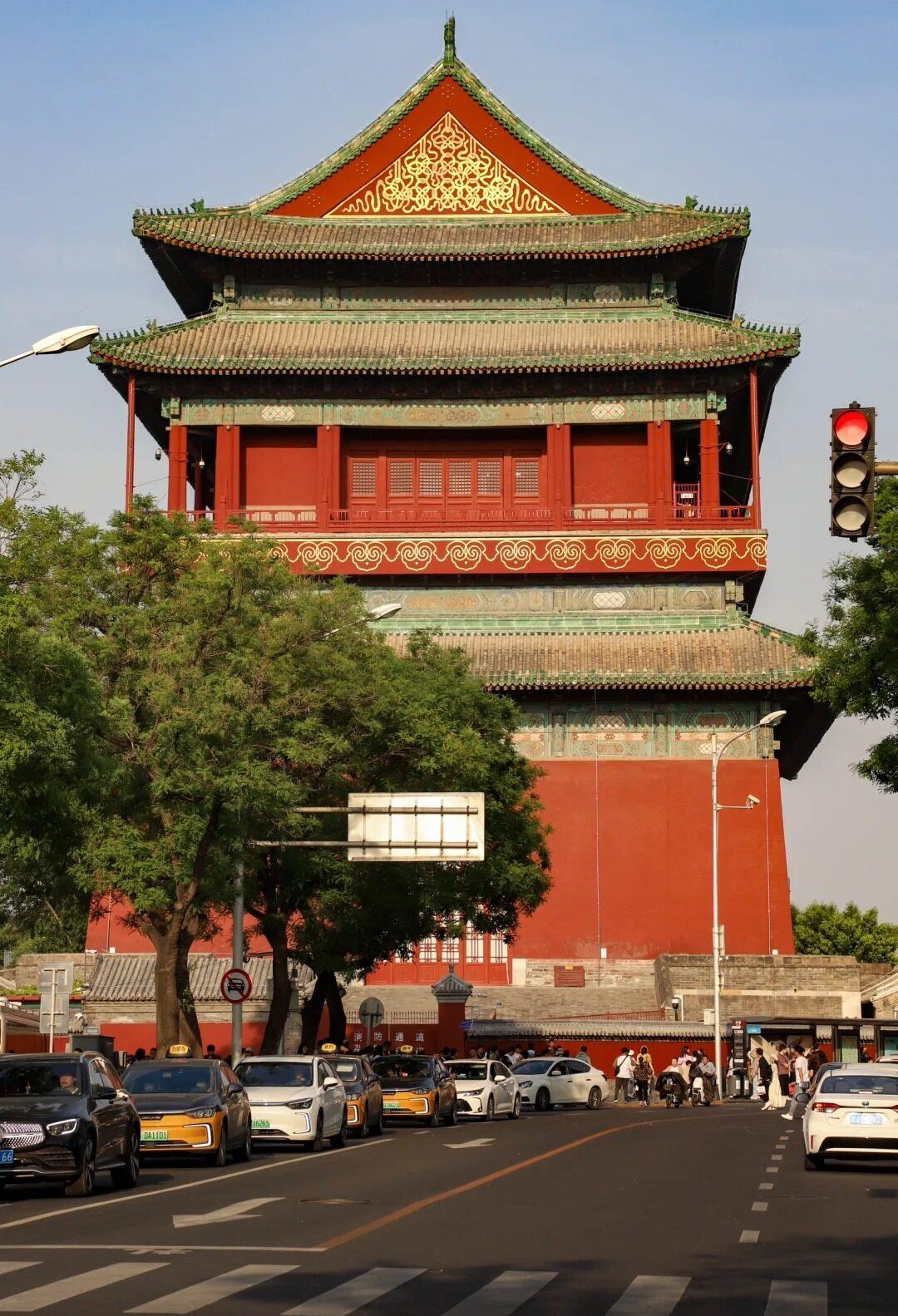
Architectural Features
- Main Structure: The Drum Tower is a two-story wooden structure built on a 4-meter-high stone and brick base. The building stands at a total height of 46.7 meters, making it a prominent feature in Beijing’s skyline. Its design follows traditional Chinese architectural principles, with a hip-and-gable roof adorned with glazed tiles and intricate wooden brackets supporting the eaves.
- Drum Hall: The upper floor of the tower houses the Drum Hall, where a collection of 24 drums was once used for timekeeping. Today, visitors can see replicas of these ancient drums, including a massive replica of the original central drum. The hall’s high ceiling and spacious interior create an impressive acoustic environment, giving visitors an idea of how powerful the drumbeats must have sounded across the ancient city.
- Observation Deck: The second floor of the Drum Tower serves as an observation deck, offering panoramic views of Beijing’s historic district. From this vantage point, visitors can see the Bell Tower, the Forbidden City, and the surrounding hutongs (traditional alleyways), providing a unique perspective on the layout of old Beijing.
- Exhibition Area: The ground floor of the tower houses an exhibition area that displays various timekeeping instruments used throughout Chinese history. This includes sundials, water clocks, and incense timers, offering visitors insight into the evolution of timekeeping methods in ancient China.
Cultural Importance
The Drum Tower holds significant cultural importance in Chinese history and tradition. It symbolizes the ancient Chinese concept of time and its central role in organizing society. The tower’s function in announcing time and important events made it a vital part of daily life in imperial Beijing. Today, it stands as a testament to traditional Chinese architecture and engineering. The Drum Tower, along with the nearby Bell Tower, represents the preservation of cultural heritage amidst Beijing’s rapid modernization. It continues to be a popular site for cultural events and performances, particularly during traditional Chinese festivals, helping to keep ancient customs alive in the modern era.
Surrounding Attractions
- Bell Tower: Located just to the east of the Drum Tower, the Bell Tower is its historic counterpart. Built in 1420, it housed a large bronze bell used to mark the hours at night. Visitors can climb to the top for panoramic views of Beijing and see the impressive Yongle Bell, one of the largest and heaviest bells in China.
- Shichahai Lakes: This scenic area, consisting of three lakes (Qianhai, Houhai, and Xihai), is located just north of the Drum Tower. It’s a popular spot for both locals and tourists, offering traditional architecture, waterside bars and restaurants, and opportunities for boating in summer and ice skating in winter.
- Nanluoguxiang Hutong: This preserved historic alleyway, located southeast of the Drum Tower, offers a glimpse into traditional Beijing life. Stretching for about 800 meters, it’s lined with traditional courtyard homes, quirky shops, cafes, and bars, making it a popular destination for experiencing local culture and cuisine.
- Yandai Xiejie: Also known as “Skewed Tobacco Pouch Street,” this historic alley runs southwest from the Drum Tower. It’s one of the oldest hutongs in Beijing, known for its traditional architecture and shops selling crafts, antiques, and local snacks.
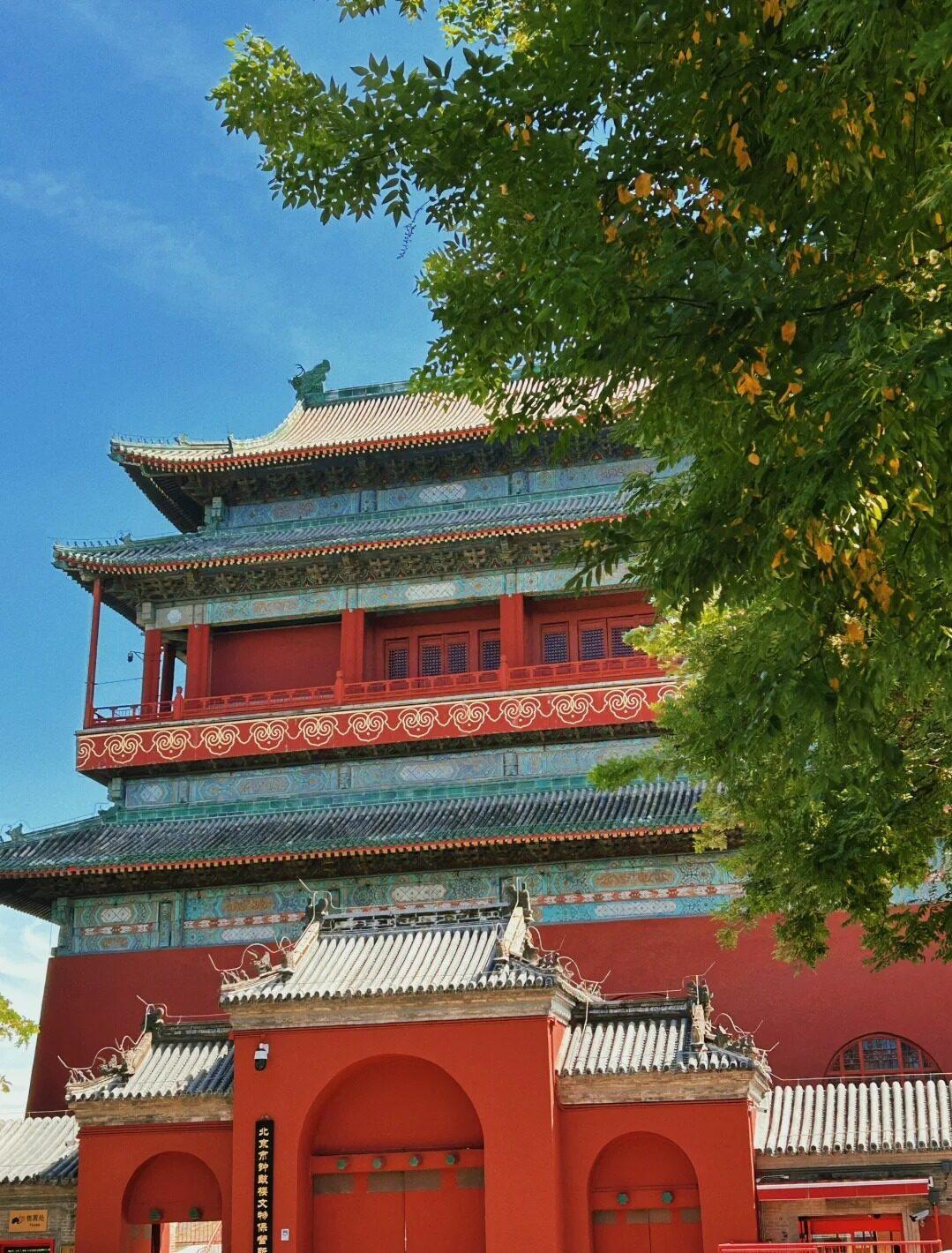
Photography Opportunities
- Exterior Architecture: The imposing structure of the Drum Tower against the Beijing sky offers excellent opportunities for architectural photography. The best shots can be captured from the square between the Drum and Bell Towers, especially during golden hour when the light accentuates the tower’s intricate details.
- City Panorama: From the observation deck on the second floor, photographers can capture stunning panoramic views of Beijing. This vantage point offers unique perspectives of the surrounding hutongs, the Bell Tower, and on clear days, even distant views of the Forbidden City and Jingshan Park.
- Interior Details: Inside the tower, the replicas of ancient drums, timekeeping instruments, and the spacious Drum Hall provide interesting subjects for detail and indoor photography. The play of light and shadow within the wooden structure can create atmospheric images.
- Cultural Performances: During scheduled drum performances, photographers can capture dynamic shots of drummers in traditional costume, showcasing the living cultural heritage of the site.
- Night Photography: Although the tower closes in the early evening, the illuminated exterior at night offers opportunities for dramatic nighttime photography, especially when combined with the nearby Bell Tower and the bustling Shichahai area.
Modern Importance
- Cultural Heritage Preservation: The Drum Tower stands as a symbol of Beijing’s commitment to preserving its cultural heritage. In a city that has undergone rapid modernization, the tower serves as a tangible link to the past, helping to maintain the historical character of the area and educate visitors about traditional Chinese architecture and customs.
- Tourism and Education: As a major tourist attraction, the Drum Tower plays a significant role in Beijing’s tourism industry. It offers both domestic and international visitors insights into China’s history and cultural practices. The tower’s museum exhibits and cultural performances serve an educational function, teaching visitors about ancient Chinese timekeeping methods and the importance of the drum in Chinese culture.
- Urban Planning Reference Point: The Drum Tower, along with the Bell Tower, continues to serve as a key reference point in Beijing’s urban landscape. It marks the northern end of the city’s central axis, an important element in traditional Chinese city planning that still influences modern urban development in Beijing.
- Community Focal Point: The area around the Drum Tower remains a vibrant neighborhood and a focal point for community activities. It attracts both locals and tourists, supporting local businesses and contributing to the preservation of traditional Beijing culture in the surrounding hutongs.
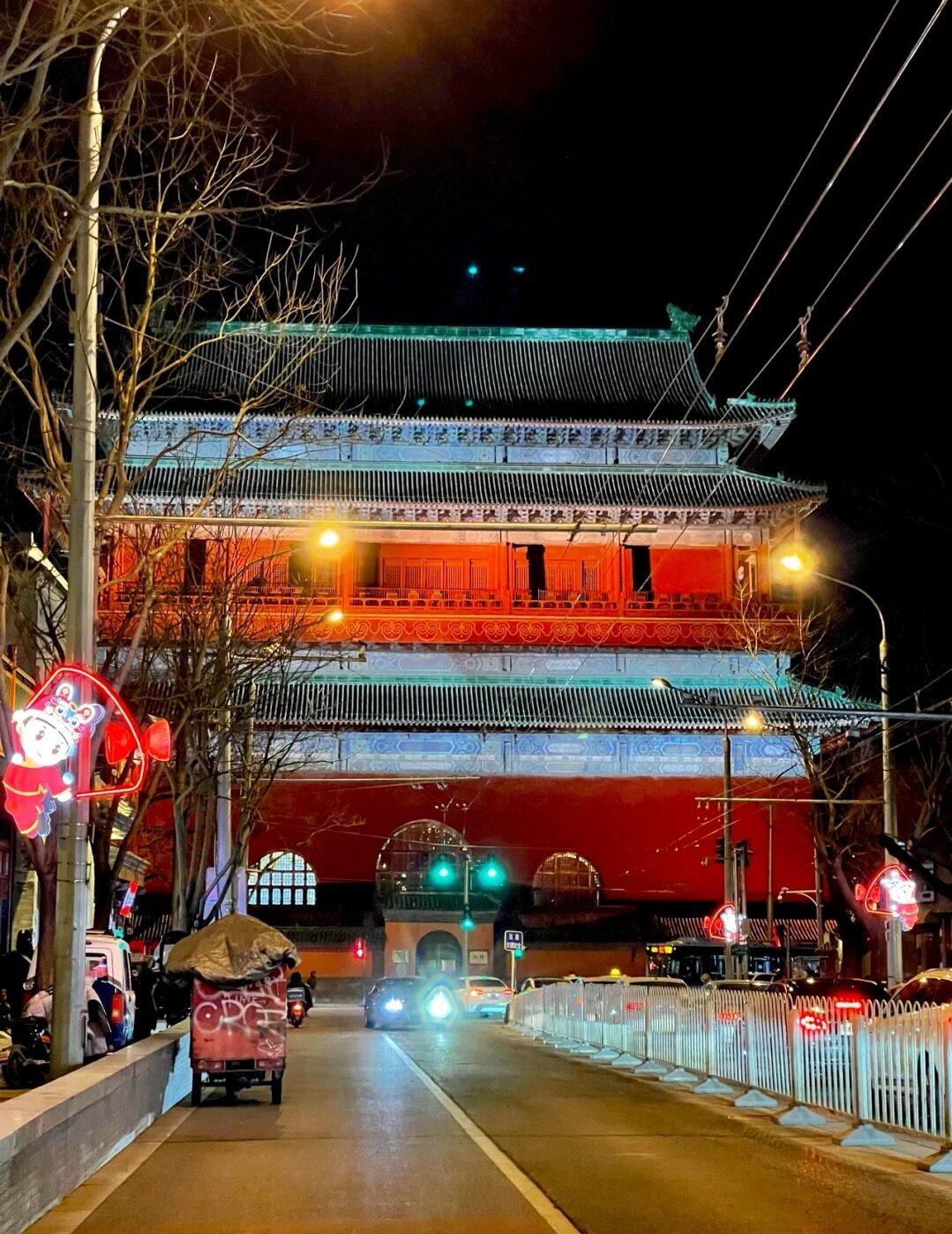
FAQ
- What is Drum Tower famous for?
Drum Tower is famous for its historical role in timekeeping in ancient Beijing, its impressive architecture, and the panoramic views it offers of the city’s historic district. - What’s inside Drum Tower?
Inside Drum Tower, you’ll find replicas of ancient drums, an exhibition on traditional Chinese timekeeping methods, an observation deck with city views, and a performance area where drum shows are held. - Is Drum Tower free?
No, Drum Tower is not free. There is an entrance fee of 30 CNY, or a combined ticket with Bell Tower for 40 CNY. - Is Drum Tower worth visiting?
Yes, Drum Tower is worth visiting for its historical significance, architectural beauty, cultural performances, and the panoramic views it offers of Beijing. - What to do in Drum Tower?
In Drum Tower, you can climb to the observation deck for city views, watch drum performances, explore the exhibition on ancient timekeeping, and learn about Beijing’s history. - How do I get to Drum Tower in the local city?
In Beijing, you can reach Drum Tower by taking Metro Line 2 or Line 8 to Gulou Dajie Station and exiting from Exit B. Alternatively, you can take buses 5, 60, 107, or 124 to Gulou Station. - How to visit Drum Tower?
To visit Drum Tower, go during opening hours (9:00 AM – 5:00 PM), purchase a ticket at the entrance, climb to the upper levels to see the drums and enjoy the view, and try to time your visit with one of the drum performances for a fuller experience.


